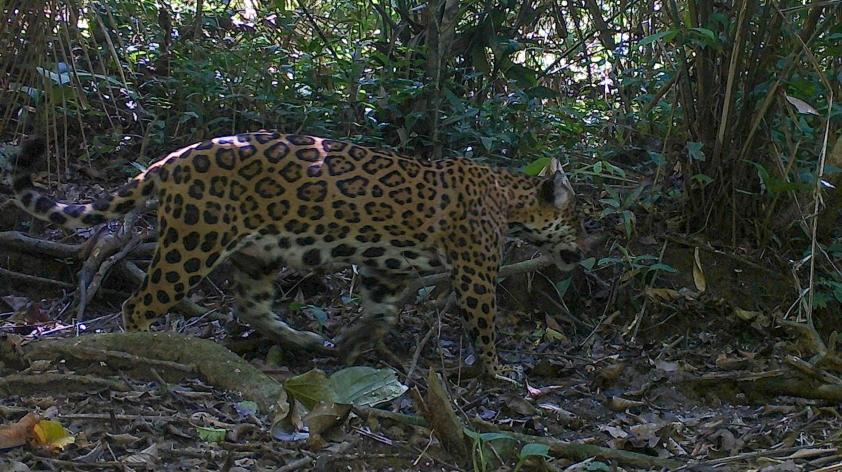
Of Brazil Nuts and Jaguars
Brazil nuts have become one of the latest super foods sold in grocery and health food stores. They are organic, non-GMO, gluten-free, vegan and have a range of health benefits such as high levels of selenium (an important antioxidant), vitamin E, protein, and monosaturated fats. But few people know that the nuts they buy neatly packaged and pealed in a bag all come from the Amazon rainforest, and in particular from the tri-border region of Brazil, Bolivia and Peru.
The Brazil nut tree is one of the tallest trees in the Amazon, reaching up to 150 feet in height with a trunk that can reach up to 6 feet in diameter. It can only grow in mature rainforests, and in Peru, it is protected by law, making it illegal to cut it down.
The Brazil nuts grow in the canopy of the tree, but the wedge-shaped nuts we buy are double-packaged in nature. Each nut is covered by a hard shell, and about 10-20 of these nuts are packed into a cannon ball-sized nut that resembles a coconut. The only animal that can open these nuts and disperse the seeds is the agouti, a large rodent the size of a Guinea pig.
In the Peruvian department of Madre de Dios, there are 1,200 Brazil nut concessions, which together cover an area of over 4,000 square miles of continuous forest. Most of these concessions are managed by families who depend on the Brazil nut harvest for their livelihood and therefore have an interest in managing and protecting the forest.
However, money from the sale of Brazil nuts is rarely enough to sustain a family, so that people engage in other activities such as logging, agriculture or hunting. These activities can have a negative impact on wildlife and on jaguars in particular.
Furthermore, living in close proximity to large carnivores can also lead to livestock depredation, resulting in retaliatory killing of predators, or in people killing jaguars out of fear.
Our project looks at the value of Brazil nut forests for jaguar conservation and studies the interactions between jaguars and Brazil nut harvesters. Based on our results we will work with local communities to develop strategies to reduce conflicts and to ensure the long-term coexistence of Brazil nut production and jaguars.
Counting animals, one picture at a time
Over the last few years we have shown that responsibly managed logging concessions in Peru provide important habitat for jaguars and many other large mammals. The logical next step for our research was to evaluate the conservation value of Brazil nut concessions.
Tried and trusted, camera traps are our go-to method for studying large mammals in the dense Amazon rainforest. Modern digital camera traps use a motion-sensor to detect animals and can record over 10,000 images and videos over a period of 6 months on a single set of batteries. This allows us to deploy a large number of cameras over vast areas.
For this study we installed 180 camera traps in nearly 800 square miles of Brazil nut concessions, the largest survey we ever conducted in the Amazon rainforest. Fortunately, we were able to use the same road and trail network the Brazil nut harvesters used to collect the nuts, to set our cameras, making the installation quick. But unfortunately, the rainy seasons started early this year, turning the dirt roads into slippery mud that bogged down our motorcycle. Work that was supposed to take a month turned into two months of waiting out rain and walking through mud.
But eventually we were able to get all the cameras back.
A first glimpse at the tense of thousands of images recorded by the cameras shows an abundance of wildlife. Jaguars, margays, tapirs and giant anteaters can be found in the Brazil nut concession.
But only a detailed analysis will reveal the real state of wildlife in the concessions and show us patterns related to the distance from villages or active logging. Processing all these images will take weeks or months and we will depend on on the help of many volunteers who have become exports at identifying a jaguar even when only the tip of a tail is visible in an image. Stay tuned for an update with the results from this study.













